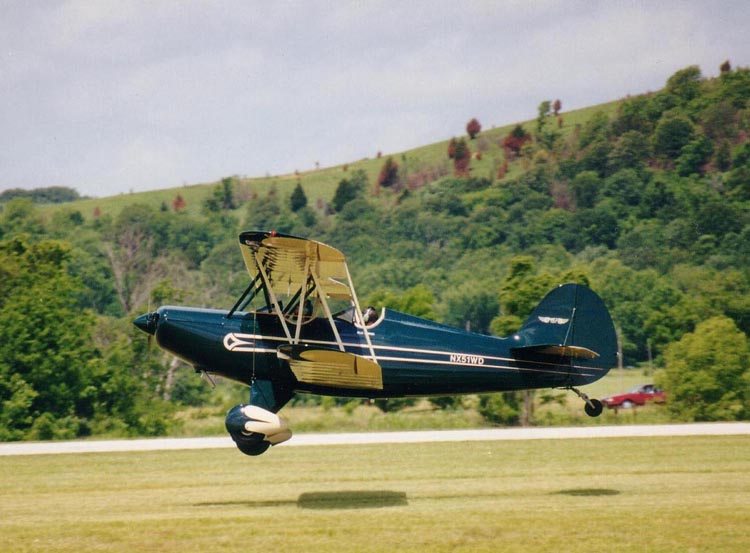As
with any aircraft, experimental in particular, people develop
modifications that make their particular aircraft unique.
There have been numerous mods done to the basic Hatz
design over the years, the most obvious being choice of
engine. Other
mods include fully cowling the engine, toe brakes vs. heel
brakes, raising the height of the upper wing, different
windscreens, the list goes on and on.
None of these changes significantly altered the overall look
of the aircraft. Despite the changes, the aircraft was still a CB-1.
There
are, however, two Hatzs that stand out.
Their changes were significant enough to have formed
branches in the Hatz evolutionary tree and resulted in a new
model of Hatz. These
aircraft are the Hatz Classic and the Hatz Bantam.

Hatz Classic - (Condensed from the Hatz
Classic website)
The
Hatz Classic can trace its history back to the Hatz CB-1. The Hatz Classic design did not reach its current level of
refinement until Billy Dawson of Seguin, Texas began building
his third example of the modified Hatz.
This airplane differs in many ways from the original
CB-1 design.
Some
of the more noticeable differences are:
- The
outward appearance, which is more rounded or fuller and
resembles the style of the grand airplanes of the 30’s.
- A
larger engine fully enclosed in the cowling. (Note
that this represents the standard configuration for the
Classic. While
people did cowl the engine on the CB-1, doing so was not
“standard” per the plans.)
- The
use of push-pull tubes in place of cables for the aileron
and elevator control linkage.
- Aluminum
ailerons.
- Seats
are relocated and reclined, allowing more leg room and
comfort in the cockpits.
It
has comfortable seats and a roomy cockpit.
It has a reasonable fuel range.
With the redefined windshield shape there is very
little wind in either cockpit.
A limited baggage compartment is usually built into the
turtle deck, the upper portion of the fuselage directly behind
the rear seat. With
a normal cruising speed of 115-120 mph, the Hatz Classic is
comparable to many larger, more powerful biplanes, such as the
Stearman.
These
characteristics make The Classic model suitable for reasonable
cross country trips.
The
1,000 + feet per minute rate of climb and solid control feel,
make The Classic an exciting platform for limited aerobatics.
Maneuvers such as standard loops, barrel rolls, and
hammerheads are easily mastered and performed.
Because the airplane weighs over a 1,000 pounds empty
and with a gross weight of 1,700 pounds, it has a heavier or
bigger feel than many of the experimental airplanes available
today.

Hatz Bantam
- (Condensed
from the Hatz Bantam
website)
The
Hatz Bantam is an evolution of the Hatz CB-1 Biplane designed
by John Hatz in the late 1960s. It has been modified to
use the Jabiru 3300 120 hp. engine. To balance the plane
with the lighter 178 lb. engine, the CB-1 design was lightened
and dubbed the "Bantam". The empty weight of
the Hatz Bantam has been reduced to approximately 780 lbs.
Setting the gross weight at 1,320 lbs. gives the Bantam a
useful load of 540 lbs and will qualify it to be a "Light
Sport" aircraft.
Without
changing the relative position of the propeller with an O200
engine, changes in the Bantam include:
1.
Tail
group from Sta. 6 aft (horz. stab., elevators, vert. fin, tail
wheel etc.) at over thirty lbs. has been moved forward 4
inches.
2.
Wings
are moved 1-1/2" aft.
3. Pilots
cockpit is 1" forward.
4. Fuel
tank has been relocated from the center section to the forward
fuselage below the longerons between Sta. 1 & 2 (18+ gal).
5. Each
wing panel is 12" shorter.
6. Ailerons
are on the lower wings only.
7. Wing
ribs and bracing are pressed aluminum.
The prototype Hatz Bantam, N. American Flyer, rolled out August of 2005.